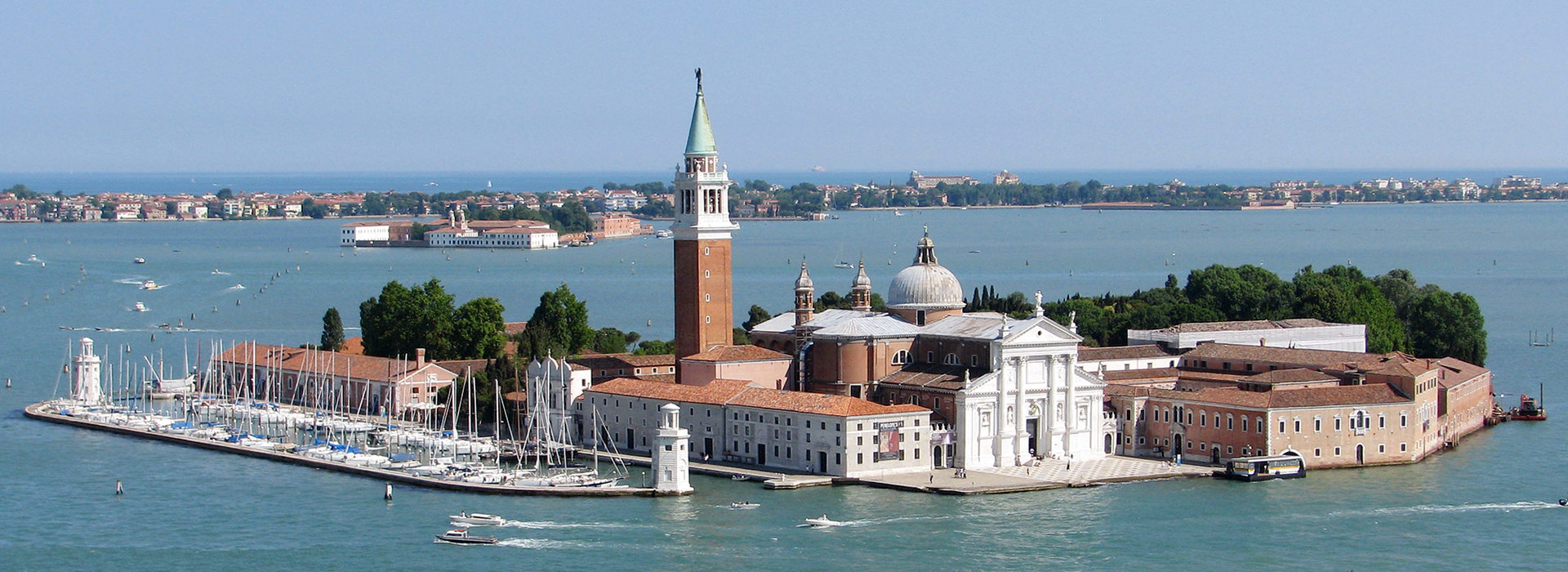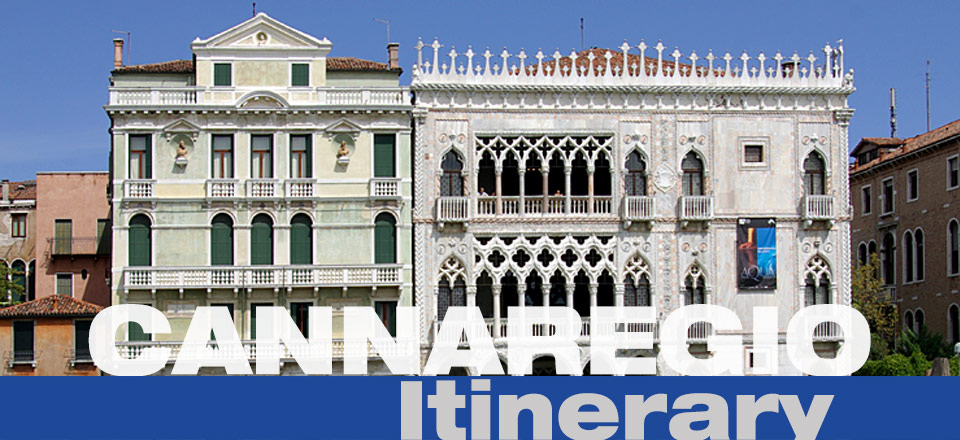Cannaregio is the northernmost of the six historic districts of Venice. It is the second largest sestiere by land area and the largest by population. San Michele island, the historic cemetery, is associated with the district. The Cannaregio Canal gave the district its name (Canal Regio is Italian for Royal Canal).
Development began in the eleventh century as the area was drained and parallel canals were dredged. Although elegant palazzos were built facing the Grand Canal, the area grew primarily with working class housing and manufacturing. Beginning in 1516, Jews were restricted to living in the Venetian Ghetto. It was enclosed by guarded gates and no one was allowed to leave from sunset to dawn. However, Jews held successful positions in the city such as merchants, physicians, money lenders, and other trades. Restrictions on daily Jewish life continued for more than 270 years, until Napoleon Bonaparte conquered the Venetian Republic in 1797. He removed the gates and gave all residents the freedom to live where they chose.
In the 19th century, civil engineers built a street named Strada Nuova through Cannaregio, and a railway bridge and road bridge were constructed to connect Venice directly to Mestre. Today, the areas of the district along the Grand Canal from the train station to the Rialto Bridge are packed with tourists, but the rest of Cannaregio is residential and relatively peaceful, with morning markets, neighborhood shops, and small cafés.
The main sights is Cannaregio are the Ponte delle Guglie, Venice Santa Lucia Train Station, Venetian Ghetto, Sacca della Misericordia, Ca' d'Oro, Palazzo Labia, Ca' Vendramin Calergi with the Wagner Museum and the Casino; and the churches: Chiesa degli Scalzi, Santa Maria dei Miracoli, Madonna dell'Orto, San Canciano, San Geremia, Sant'Alvise, San Giovanni Crisostomo and the Abbazia della Misericordia.
Church dei Carmelitani Scalzi
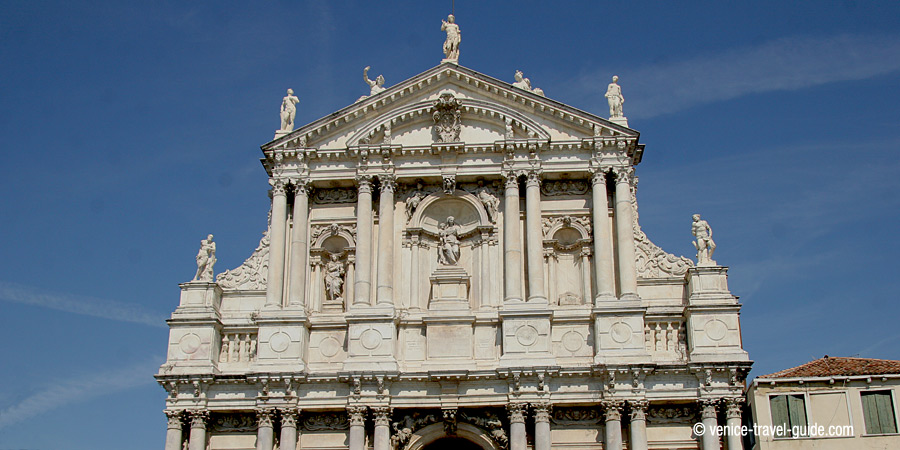
The Chiesa di Santa Maria di Nazareth or Chiesa degli Scalzi was built in 1660 from a design by Baldassarre Longhena. The grandiose façade was created by Giuseppe Sardi. After an Austrian bomb exploded on 27 October 1915, the frescoed vault by Tiepolo collapsed. Today, only a few fragments remain in the Galleries of the Accademia.
In 1934 the ceiling was replaced, and it was adorned with a fresco by Ettore Tito. The first chapel of the right-hand nave has a vault frescoed by Giambattista Tiepolo.
Square and Church of San Geremia
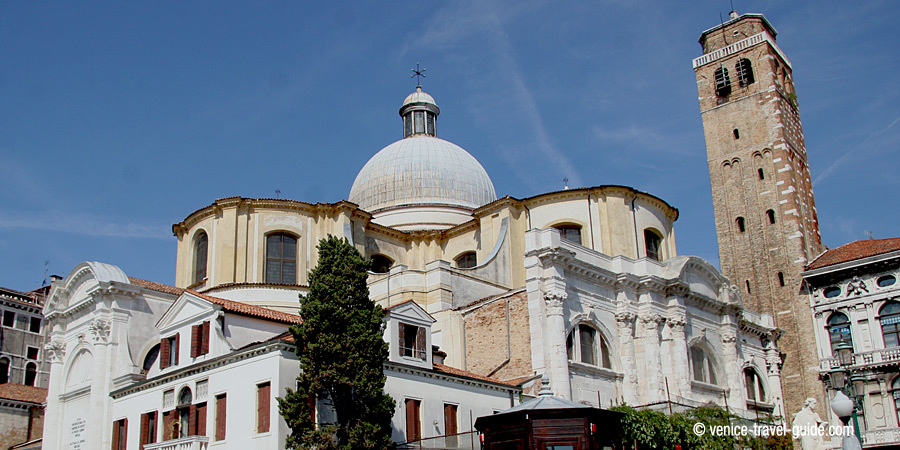
The Chiesa di San Geremia houses the relics of Saint Lucy of Syracuse. The relics were previously housed in the church of Santa Lucia which has since been demolished. The first church was erected here in the 11th century, and was later rebuilt on several occasions. In 1206 it is mentioned to house the remains of St. Magnus of Oderzo (died 670).
St. Magnus had taken refuge in this area from the Lombards.
Labia Palace
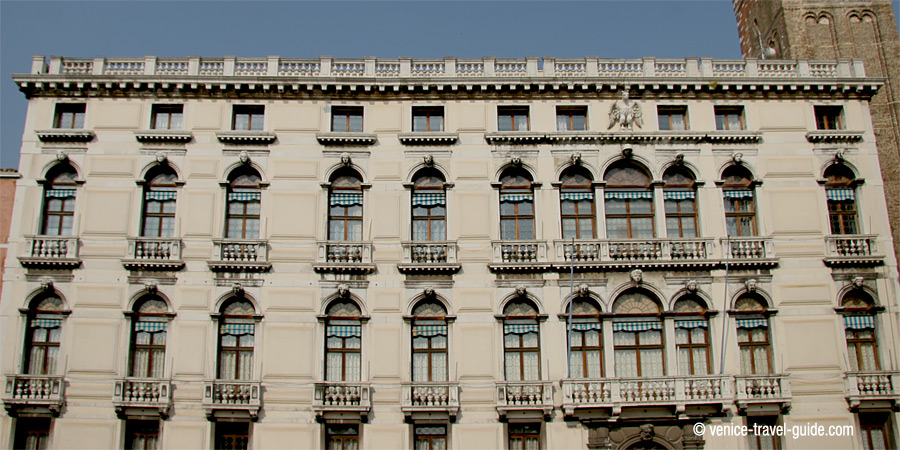
The Palazzo Labia was built at the end of the seventeenth century by the Labias, a family of rich Catalan merchants. The inside is decorated with frescoes by Tiepolo. It is now headquarters of the Italian State Television. Its three façades, in Istrian stone, richly adorned, are targeted at three different points of the city.
The first overlooks the Grand Canal, the second looks at the Campo San Geremia (possible attribution to Giorgio Massari) and the third at Cannaregio river.
Church of San Giobbe
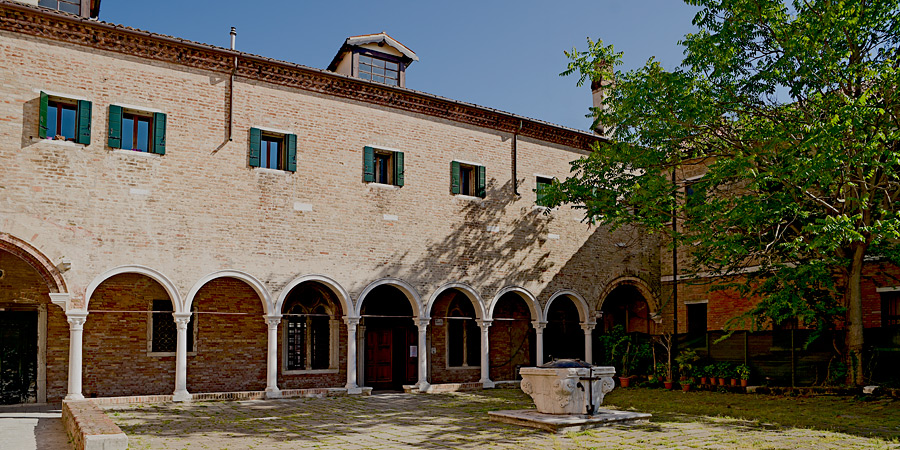
The Chiesa di San Giobbe has a Renaissance portal by Pietro Lombardo. Inside it is decorated with the works of Tuscan artists such as Luca della Robbia. It was built around 1450 by two architects known and very active in Venice: Antonio Gambello and Lorenzo di Gian Francesco, the bell tower was completed in 1464.
The church owes its creation to two personalities: St. Bernardine of Siena (and this is particularly active in Venice in the mid-fifteenth century) and the Doge Cristoforo Moro (contributed substantially to the civil and religious rights of this urban area, especially during the its slatted 1462-1471).
Ghetto
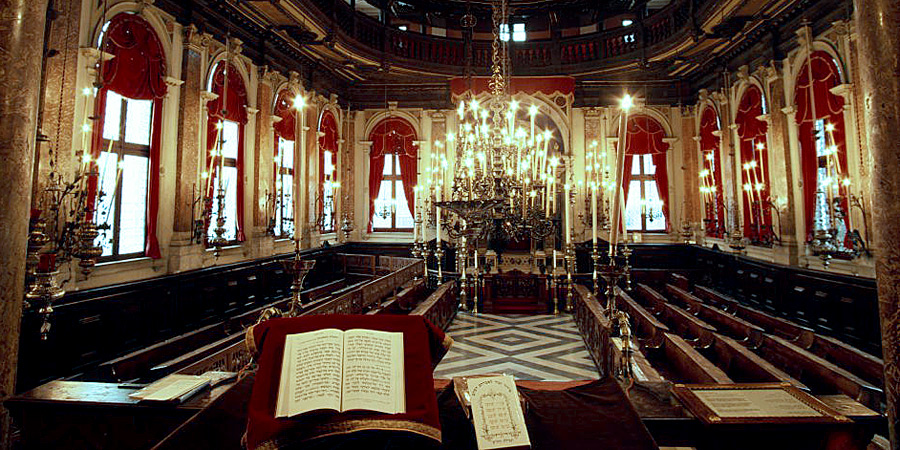
The term Ghetto derives from the foundries that were found in the area in which the metal was 'gettato' or smelted. In 1509 it became the part of the city that was reserved for the Jews. They built their 'schole' or synagogues here. the first one was the Schola Tedesca (German Synagogue), which was built in 1528.
It was followed by the Schola Canton and the Schola Italiana. The Schola Spagnola was rebuilt by Baldassarre Longhena. The German synagogue houses the museum of Jewish art and contains many fine religious exhibits.
Mastelli Palace
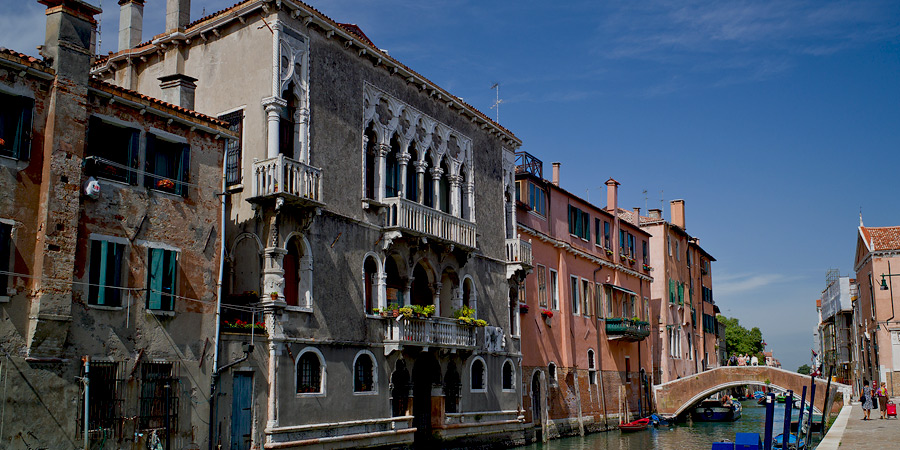
A very pictouresque area with the near Campo dei Mori and Palazzo Mastelli also known as palazzo del Cammello because of the stone bas-relief on the façade overlooking the canal. The thirteenth century statues at the corners of the building commemorate three Arab merchants brothers known as Mastelli.
Traditionally they are identified in the four marble figures in Campo dei Mori. In this area the Mastelli family owned other properties but this building is the only one left in good condition.
Church of Sant'Alvise
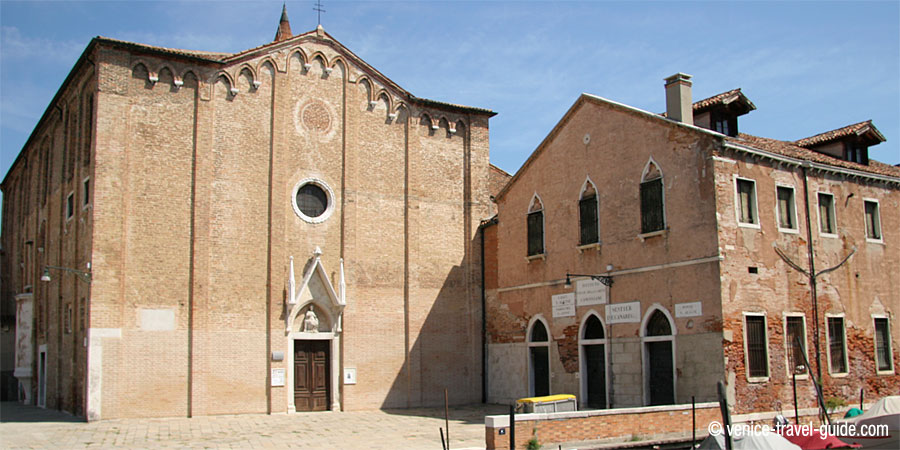
According to tradition, the Chiesa di Sant'Alvise was built by Antonia Venier in 1338 and dedicated to St. Louis of Toulouse, and located next to an adjacent convent. The brick exterior and facade do not reflect the rich interior. It has a single nave, the current appearance dating from the 17th century restoration.
The ceiling was entirely frescoed. A single nave structure, the church still contains its 15th-century barco - the raised Nuns Choir, which rests on columns and buttresses and leads directly from the church to the nearby convent.
Church of the Madonna dell'Orto
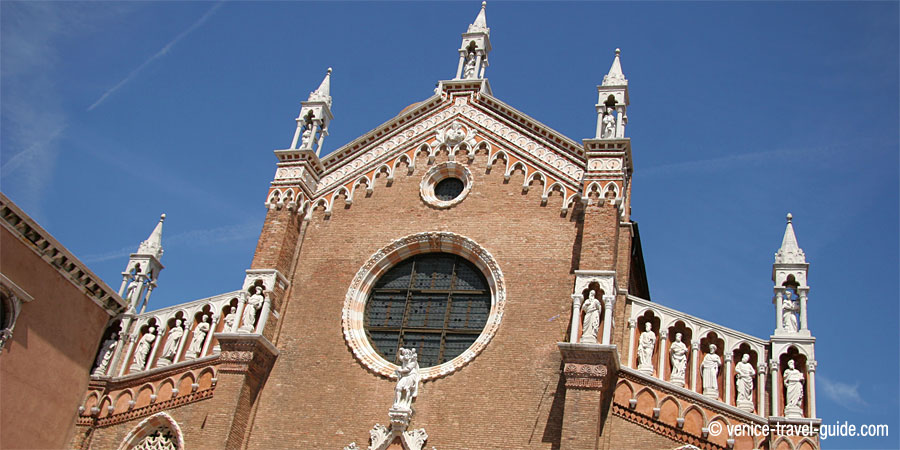 The Chiesa della Madonna dell'Orto was built towards the middle of the fourteenth century. First dedicated to Saint Christopher, and later dedicated to the Virgin Mary after miraculously finding a statue of the Virgin in a nearby garden. The facade and cloister date back to 1460-1464, with statues from the end of the fifteenth century.
The Chiesa della Madonna dell'Orto was built towards the middle of the fourteenth century. First dedicated to Saint Christopher, and later dedicated to the Virgin Mary after miraculously finding a statue of the Virgin in a nearby garden. The facade and cloister date back to 1460-1464, with statues from the end of the fifteenth century.The church is a beautiful example of Venetian Gothic and hosts wotks by Tintoretto and Cima da Conegliano. The Campo in front of the church has a peculiarity: it is one of the few remaining in Venice with the traditional terracotta brick paving, positioned in a herringbone pattern.
Vendramin Calergi Palace
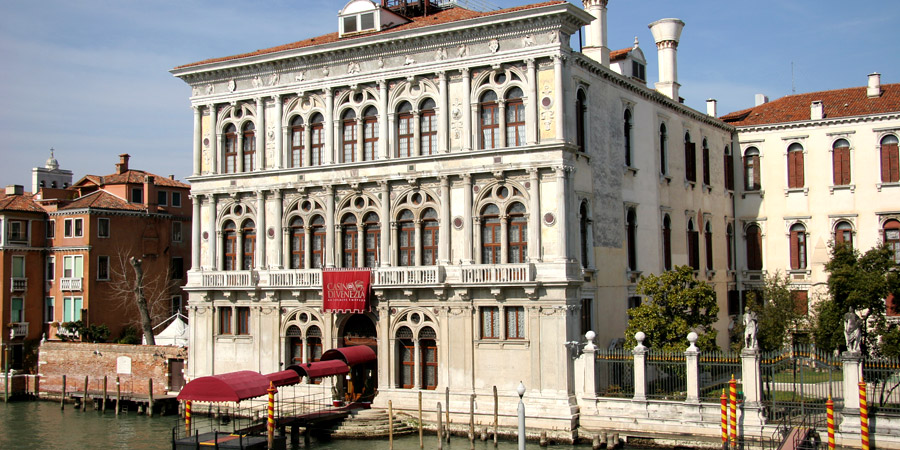
The Palazzo Vendramin Calergi is a fine example of Renaissance architecture. It was commissioned by the Loredans who inscribed the words 'Non nobis Domine' ('Not for our sake, Lord'), at the base of the façade. This is taken from the first verse of a psalm and was already used by the Knights Templars as a symbol of humility.
The palazzo later came into the possession of the Calergi family and throught marriage into the possession of the Vendramin, which is why it has a double name. Wagner died there in 1883.
Ca' d'Oro
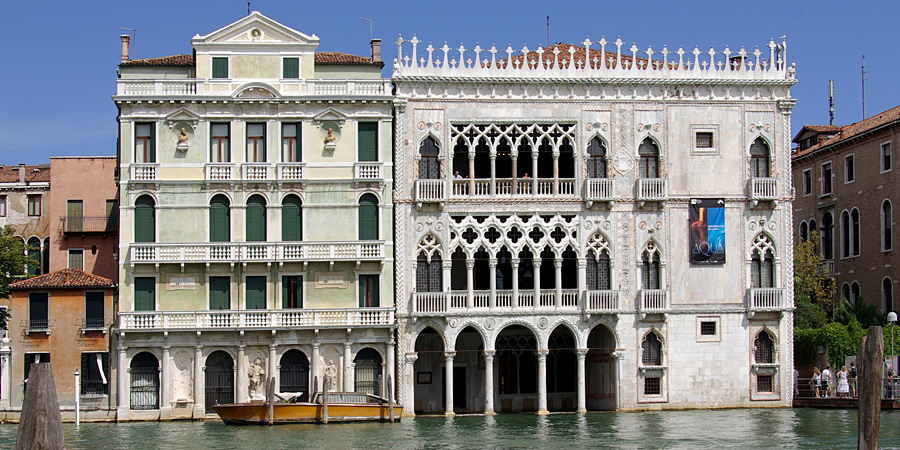
The Ca' d'Oro or Palazzo Santa Sofia was built by Marino Contarini in 1441, who used the best stonemasons of his time. It is considered the most striking example of Venetian Gothic. It has a façade with polychrome marble moulding and certain elements were overlaid with gold, which was why it was called the ca' d'Oro.
The palace at one point became the property of Baron Giorgio Franchetti who donated it to the State in 1916 and is now a museum, with works by Mantegna, paintings of Tuscan school and a beautiful collection of Renaissance bronzes.
Oratorio dei Crociferi
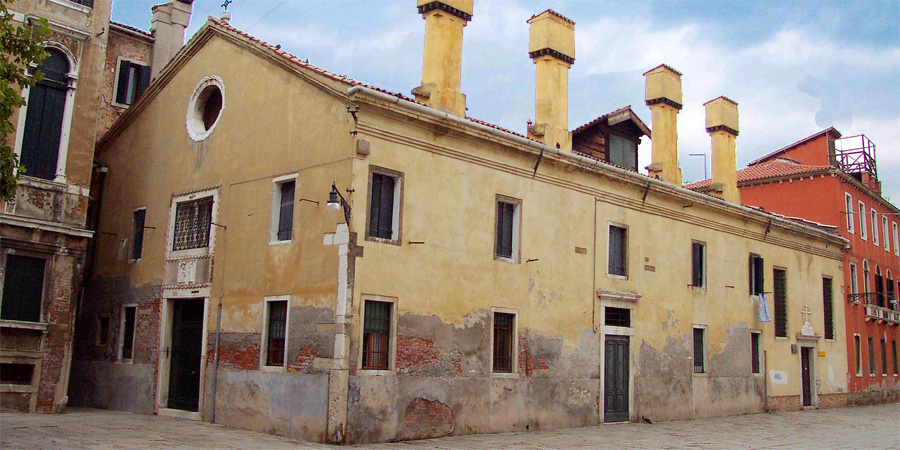
Oratorio dei Crociferi is a treasure trove of works by Palma il Giovane depicting the history of the religious order of the Crociferi, which was founded in the XIII century and suppressed in the XVII century. Founded in the middle of the 12th century by Crucifer brothers to aid and give shelter to pilgrims and crusaders on their way to the Holy Land.
The structure was converted into a hospital during the 1300s to give aid and comfort to indigent women.
Church of Santa Maria dei Miracoli

Santa Maria dei Miracoli, also known as the "marble church", was built around 1482 from a design by Pietro Lombardo. It is a fine example of Reinassance architecture, decorated with polychrome marble and bas-reliefs of sirens and tritons, which are unusual decorations for a church. It still has the small altar-piece painted by Nicolò di Pietro.

